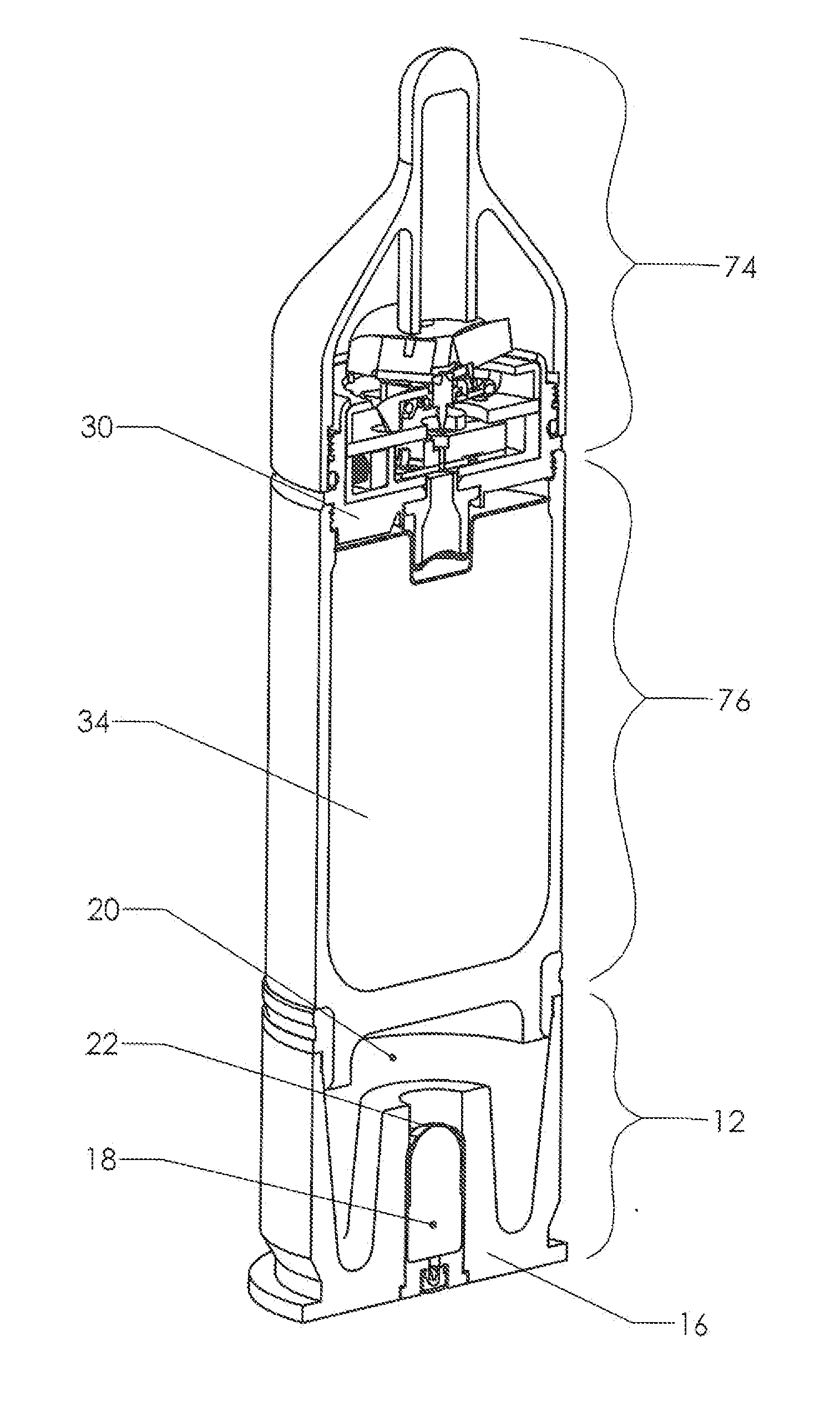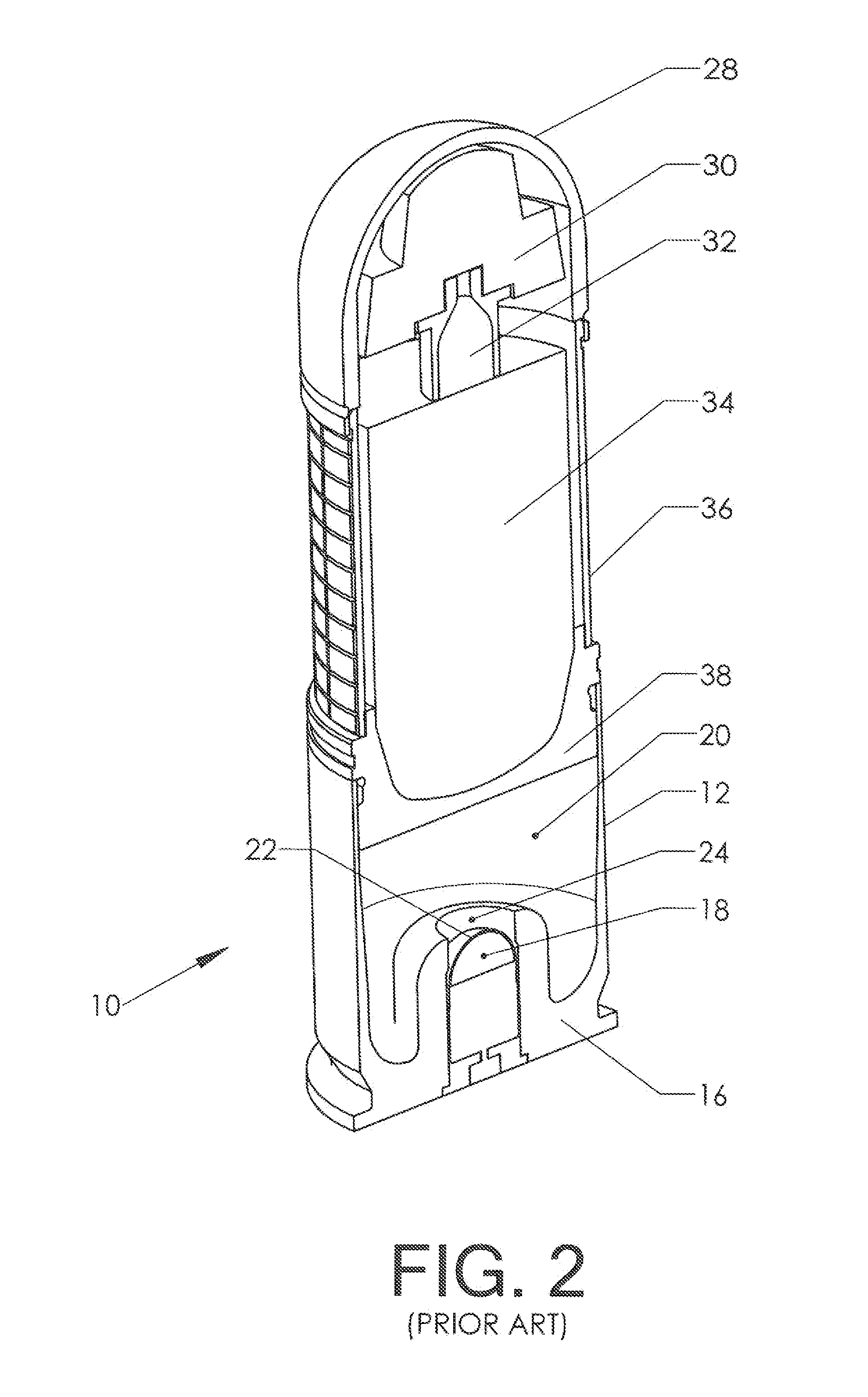Low Shrapnel Door Breaching Projectile System
a projectile system and low shrapnel technology, applied in the direction of hand grenades, weapons, ammunition fuzes, etc., can solve the problems of insufficient projectile size and mass, inability to achieve optimal projectile function, and inability to prevent the occurrence of a single arc, so as to reduce the arc of the arc and the resulting off-axis wobble
- Summary
- Abstract
- Description
- Claims
- Application Information
AI Technical Summary
Benefits of technology
Problems solved by technology
Method used
Image
Examples
Embodiment Construction
[0043]FIG. 9 shows a perspective view of a grenade round made according the present invention, including a cutaway to reveal internal details. The round includes three major components. These are: detonation assembly 74, body 76, and propulsion assembly 13.
[0044]The round is made to be fired from a rifled bore. Propulsion assembly 13 remains in the breech end of the bore when the round is fired. Detonation assembly 74 and body 76 together form a projectile which flies downrange as a unit. Acceleration of the projectile is accomplished using the same “high-low” pressure system as for the prior art. The propellant within high pressure chamber 18 is initiated. Burst diaphragm 22 then ruptures and meters the expanding propellant gas into low pressure chamber 20 (which is the void between the aft end of body 76 and base 16). Body 76 contains explosive 34. The explosive is initiated by fuse assembly 30, which will be explained in more detail subsequently.
[0045]FIG. 10 shows a more detaile...
PUM
 Login to View More
Login to View More Abstract
Description
Claims
Application Information
 Login to View More
Login to View More - R&D
- Intellectual Property
- Life Sciences
- Materials
- Tech Scout
- Unparalleled Data Quality
- Higher Quality Content
- 60% Fewer Hallucinations
Browse by: Latest US Patents, China's latest patents, Technical Efficacy Thesaurus, Application Domain, Technology Topic, Popular Technical Reports.
© 2025 PatSnap. All rights reserved.Legal|Privacy policy|Modern Slavery Act Transparency Statement|Sitemap|About US| Contact US: help@patsnap.com



